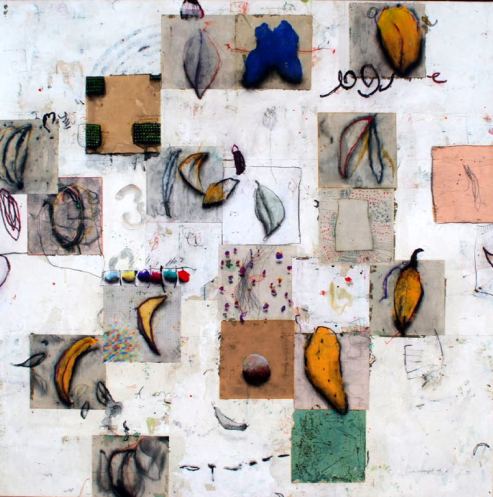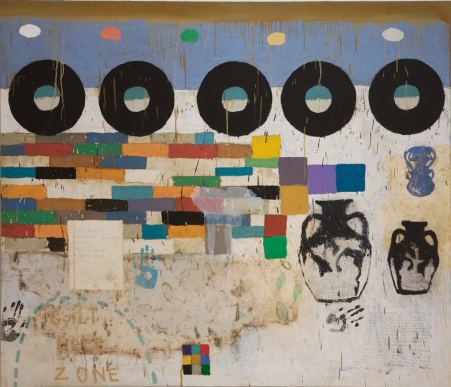The two best art critics still employed by a U.S. newspaper who don’t work for the New York Times are both in California: Christopher Knight at the LA Times and Kenneth Baker at the SF Chronicle.
There are no art critics on staff at daily newspapers in Seattle, Chicago, Miami, Dallas and Houston, among others. The admirable Douglas Britt works for the Houston Chronicle on contract. Even though he has the output of two staffers and has brought the paper back into the national discussion, the Chronicle has not said it will restore the position.
A newspaper art critic differs from colleagues at art magazines in one essential, and it’s not that the former is less savvy than the latter, although that is frequently the case. A critic at the newspaper aspires to a general audience. The chance to hook somebody with a review who’s flipping pages to get somewhere else is tantalizing.
Without newspapers, those accidents appear to be less likely to happen, but there is more depth and range in each separate field, with Web sites available to run on a constant scroll across the face of cell phones.
In that context, art coverage in Golden State newspapers remains golden.
Here’s Knight on MoCA. As ever he’s making the case for Los Angeles:
But this is not just a promotional treasure-house show. Installed
chronologically by chief curator Paul Schimmel, it also tells a story —
although one that’s rarely heard. The postwar rise of American art is
paired with the simultaneous rise of Los Angeles, from shallow
backwater to cultural powerhouse. (more)
Kenneth Baker is more detached. He makes his case artist by artist and doesn’t care about regional positioning:
Expatriate American painter Cole Morgan works like a
man keeping a journal, jotting down scenes, images and incidents for a
story that never gets told… The studio wall – a catchall for
reminders, sketches, mementos, little visual gimmicks – may be (his)
ultimate subject…Morgan’s work can seem annoyingly mannered at times,
but his fondness for making it never comes into doubt, a quality found
too rarely in contemporary art. (more)

Things
make their way into Carnwath’s paintings as they do into anyone’s
consciousness: by intrusion, by triggering memories and ricocheting off
the mental walls of habit and fixation. (more)

Also from Baker, bad news for the Berkeley Art Museum:
A
shortage of funds has prompted UC Berkeley to abandon its plan to
construct a new Berkeley Art Museum and Pacific Film Archive downtown.
The building, a distinctive and innovative design by Tokyo architect
Toyo Ito estimated to cost $143 million, was to replace the museum’s
present, seismically endangered quarters on Bancroft Way, completed in
1970. (more)
Baker
and Knight are stellar, but also solid is Robert Pincus at the San
Diego Union-Tribune. His recent piece on Tara Donovan says it all.
Sample:
The
question — How did she do it? — has different facets to it. There’s
the technical aspects of how to get thousands of pins to form a cube
without adhesives (density and gravity are what does the remarkable
trick) and how thousands of straws stay in place when stacked (some
adhesive here).But there is also the bigger issue: How are these works so
much greater than the sum of their parts? The best word for it might be
alchemy. A wall of straws, “Haze,” doesn’t look like straws — it
resembles a meteorological event, shifting clouds or fog. Scotch tape
becomes a field of delicate forms, looking like a bed of underwater
flora. (more)
Knight,
Baker and Pincus are all veterans. Britt in Houston represents critics
of the next generation. For them, there is no room in the old media
landscape, and the new can’t come soon enough.



I agree about Kenneth Baker being one of the best and last newspaper critics left writing. He recently wrote a very perceptive review about Anne Appleby’s recent show in San Francisco at Paule Anglim Gallery.
Comparing Appleby, as she often is, to Brice Marden, Baker wrote:
“The two artists continue to address a common difficulty: how to project personal meaning into abstraction without expressionism.
But the materialist quality common to Marden’s early and Appleby’s recent work may encourage people to misread hers, which behaves very differently from his. Briefly, Marden’s oil and wax pictures respond to light but do not seem to emanate it. Appleby’s do both.”
That is, to my mind, a very perceptive response to these two very good artists who have worked in similar materials but with subtly different results.
Well observed, Regina!
General news media does have a different audience, and arts writers there necessarily have broader foci. Not only does Chris Knight cover gallery and museum exhibitions, he reviews non-profit spaces and public art, giving both professional insight and general access to multiple aspects of contemporary art news.
And as a lapsed Houstonian, I experienced Doug Britt’s importance in the Houston scene. He writes about public art, performances, art conferences and alternative spaces as well as the commercial gallery scene. He understands his profession and writes very well.
The notion of what comprises art news and art criticism for a general readership is key to the growth of contemporary art efforts in all regions.
Christopher Knight’s nickname in LA is Christopher Knightmare. He is totally linked with Schimmel and your buddy Burden and is very one-sided in his criticism.
Diana. Paul Schimmel is a brilliant curator. As far as Chris Burden being my buddy, I should be so lucky. Christopher Knight is one-sided? He’s a critic. The side from which he sees things is his own. I’ll take him over a 100 more reasonable others.